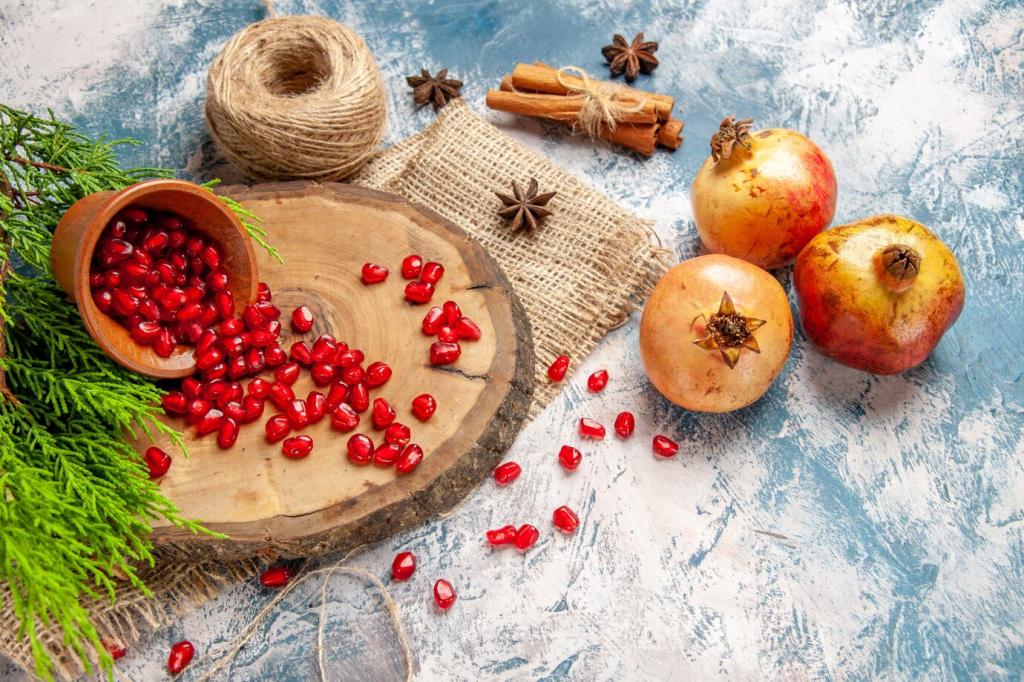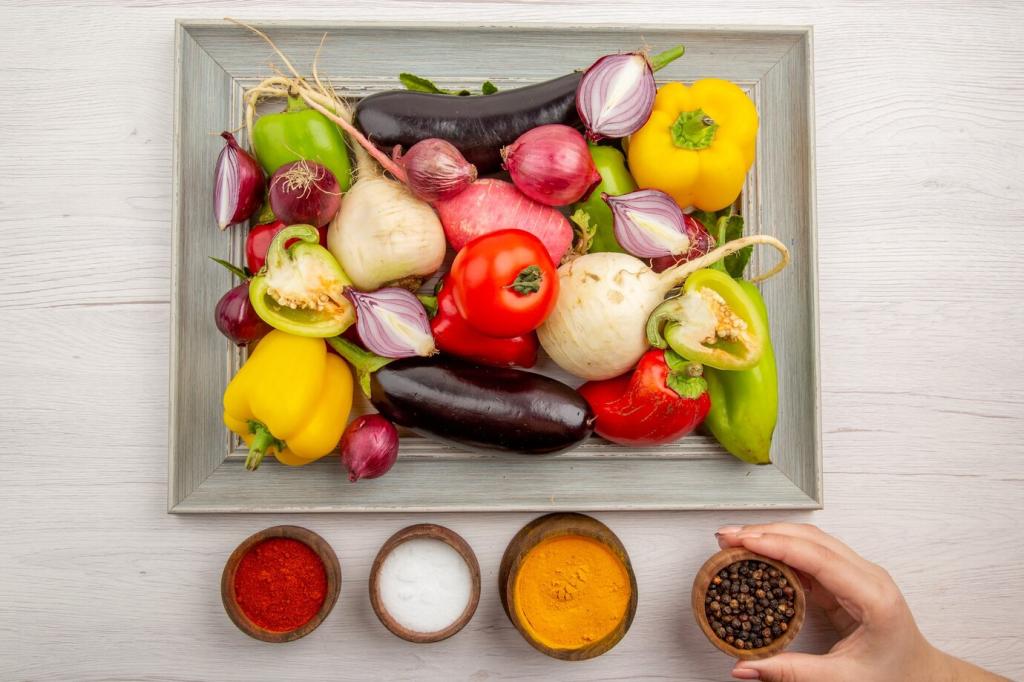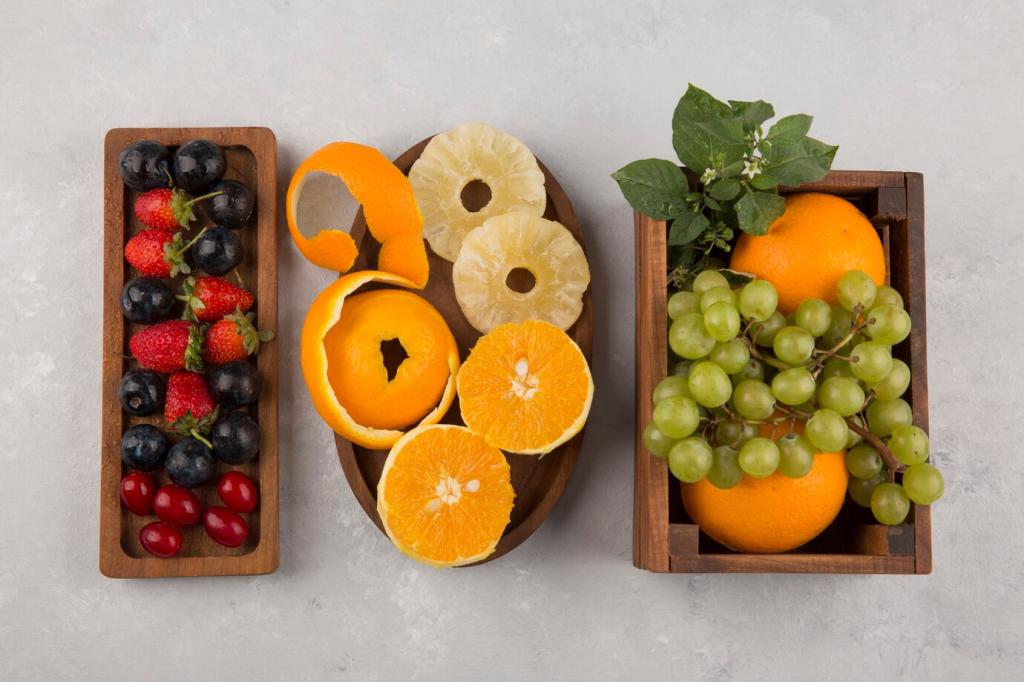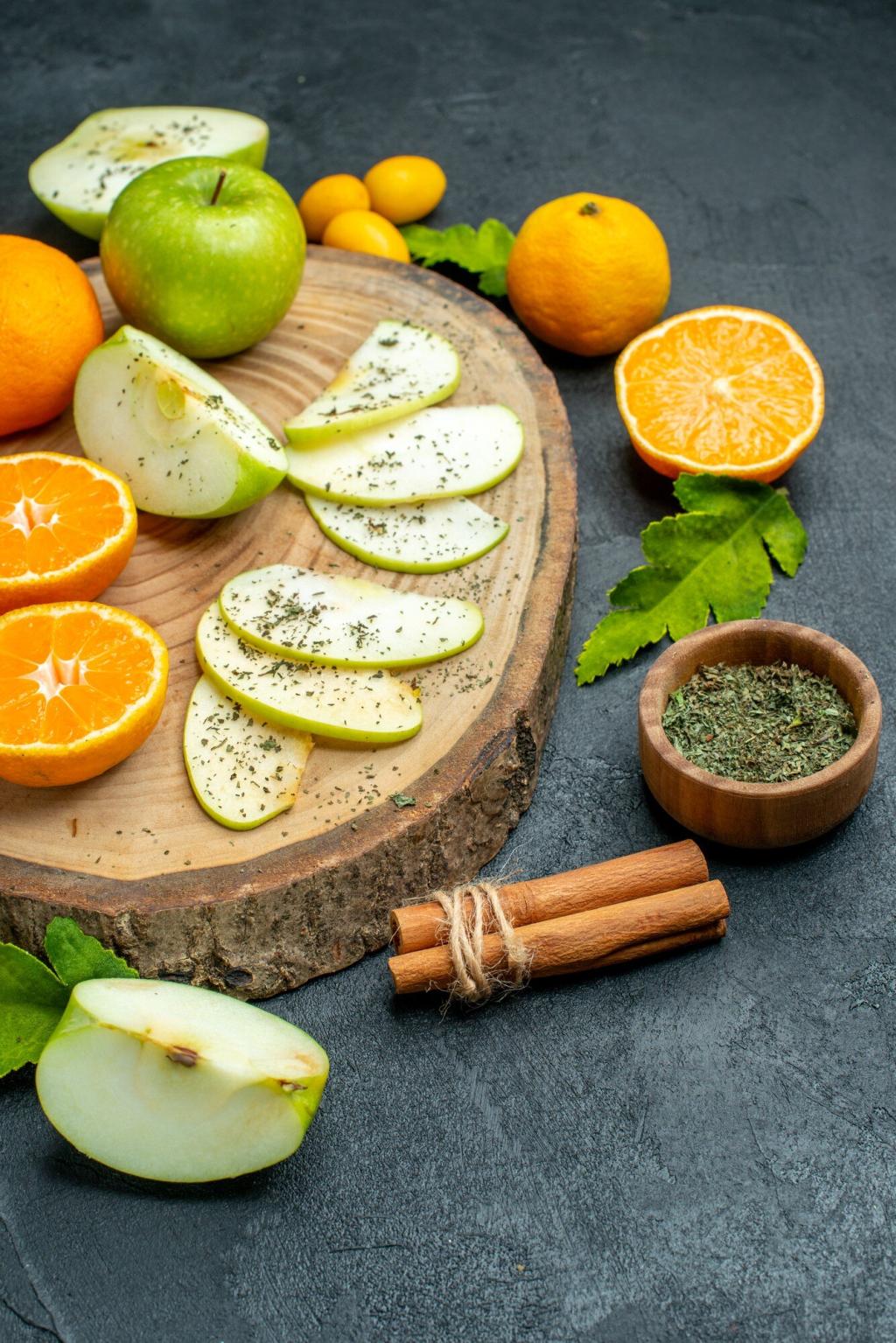
Balancing Nutrition with Seasonal Produce: Eat with the Weather, Thrive Year-Round
Chosen theme: Balancing Nutrition with Seasonal Produce. Welcome! Here, we turn the changing seasons into an effortless roadmap for delicious, nutrient-balanced meals. Expect practical ideas, science-backed tips, and stories from the market aisle. Love seasonal eating? Subscribe and share your favorite seasonal swap with our community.



Greens, Peas, and Protein to Keep You Satisfied
Pair asparagus, peas, and tender spinach with eggs, salmon, or tofu. Add chewy farro or quinoa for steady energy. Bright herbs and lemon deliver zing without excess salt. Tell us your favorite spring herb combo for a simple, balanced weeknight bowl.
Fiber for a Happy, Waking Gut
Spring fiber from radishes, artichokes, and young carrots supports digestion after heavier winter foods. Combine prebiotic all-stars like leeks with probiotic yogurt or kefir. That synergy can ease bloating while nourishing beneficial microbes for better mood, immunity, and nutrient absorption.
Allergy-Friendly Plates with Anti-Inflammatory Flair
Pollen season calls for calm plates. Try omega-3 rich sardines with arugula and citrus, or chickpea salads with turmeric and mint. Keep sugars moderate, hydration high, and colors varied. Share your go-to anti-inflammatory spring recipe with the community for our next roundup.

Managing Sweetness and Blood Sugar Gracefully
Pair ripe peaches or melons with cottage cheese, yogurt, or nuts to slow absorption. Add basil or mint for aroma and a squeeze of lime for brightness. This simple trick preserves joy in seasonal fruit while keeping energy smoother through busy summer afternoons.
No-Cook Templates for Heat Waves
Think sliced tomatoes, cucumbers, and olives with chickpeas and feta; or zucchini ribbons with canned tuna, lemon, and olive oil. Add whole-grain bread or chilled quinoa. These quick assemblies taste like a holiday and keep kitchens cool when the sun is relentless.
Electrolytes, Sun, and Smart Hydration
Tomatoes, watermelon, and leafy greens bring potassium; sprinkle a little salt on salads if you sweat heavily. Infuse water with citrus and mint. Remember that chilled soups like gazpacho deliver hydration and minerals together. What is your favorite hydrating produce combo?
Autumn Plates: Comfort, Fiber, and Calm Blood Sugar
Roasted squash, sweet potatoes, and carrots become naturally sweet. Balance by adding roasted Brussels sprouts, a protein like lentils or chicken, and a tangy yogurt-tahini drizzle. The contrast keeps portions mindful and flavors big, all while leaning on seasonal abundance.
Autumn Plates: Comfort, Fiber, and Calm Blood Sugar
Pair barley or brown rice with beans and roasted vegetables for a complete protein profile. Add apple cider vinegar or citrus to brighten. This mix keeps glycemic load moderate, supports gut health, and delivers long-lasting comfort without a mid-evening slump.


Winter Plates: Dense Nutrition When Days Are Short
Frozen and Fermented: Winter’s Unsung Heroes
Frozen berries and spinach are flash-frozen at peak ripeness, preserving vitamins. Sauerkraut and kimchi add tangy probiotics and crunch. Combine with baked potatoes, eggs, or tempeh for balance. A reader once wrote that this trio rescued their winter breakfasts from monotony.
Mineral-Rich Broths, Omnivore or Plant-Based
Bone broths and vegetable broths both deliver warmth and minerals. Toss in kale, carrots, and beans for a complete bowl. Finish with olive oil and lemon zest. This nourishing base turns scraps into sustenance and supports hydration when air is dry and chilly.
Citrus, Brassicas, and Vitamin D Awareness
Citrus brightens flavor and brings vitamin C; broccoli and cabbage supply fiber and glucosinolates. If sunshine is scarce, discuss vitamin D with your clinician. Meanwhile, a citrus-dressed slaw beside salmon creates a winter plate that is vibrant, balanced, and mood-lifting.
A Market Anecdote: Ugly Produce, Beautiful Savings
A farmer once handed me slightly bruised tomatoes for half price, then shared a lycopene tip. Scrapes vanish in sauce, nutrients stay. Ask vendors about seconds, taste new varieties, and build relationships. Comment with your best market find and how you balanced it into dinner.
Batch-Cooking and the Leftover Remix
Roast a sheet pan of seasonal vegetables on Sunday, then rotate: grain bowls on Monday, tacos on Tuesday, frittata on Wednesday. Add changing proteins and sauces. This approach keeps meals balanced, reduces decisions, and lowers costs. Subscribe for our weekly seasonal batch plan.
Pantry Staples that Boost Seasonal Stars
Keep olive oil, vinegar, legumes, whole grains, nuts, and spices on hand. These anchors turn a bag of greens or a crate of fruit into complete meals. With smart staples, seasonal produce becomes flexible, fast, and nutritionally balanced even on your busiest nights.
Glycemic Index vs. Real Meals
A ripe pear alone can spike energy, but paired with almonds and cheese, the glycemic impact drops. Real meals are mixed meals. Think fiber, protein, and fat as levers. Balance seasonal sweetness rather than avoiding it, so food stays both satisfying and celebratory.
Organic, Conventional, and Washing Well
When budget limits organic choices, prioritize a few items and wash everything thoroughly. A baking soda water soak helps remove residues and dirt. Freshness matters for nutrients too. Choose resilient seasonal produce, then balance plates with proteins, whole grains, and healthy fats you already enjoy.
Local, Seasonal, and Flexible Consistency
Local and seasonal often taste better, but global supply can fill gaps. Choose the best available option, then balance the plate. Frozen seasonal produce from elsewhere can beat tired fresh alternatives. Share your best pragmatic swap that kept your seasonal meals balanced on a hectic week.
